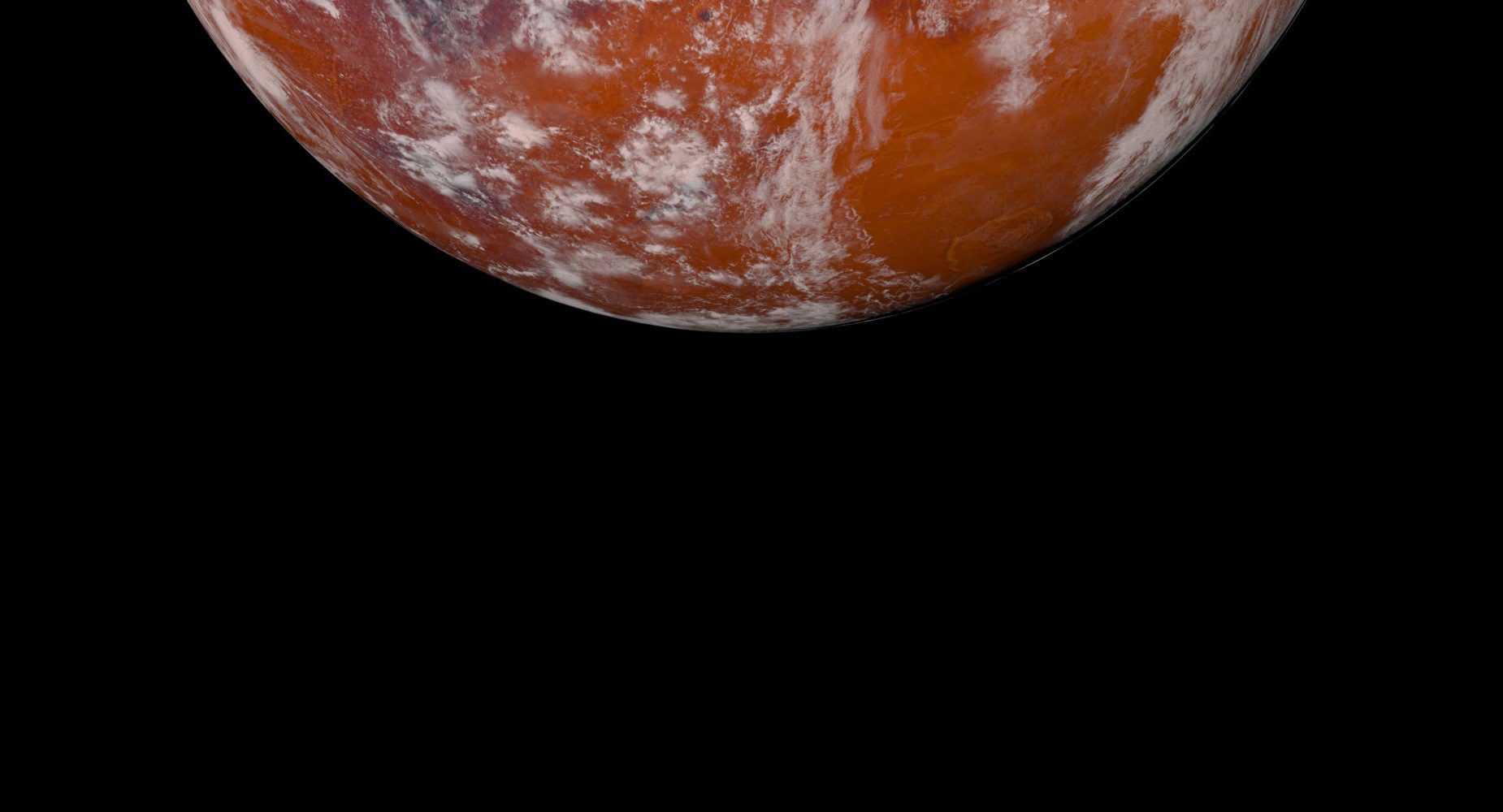
How do you terraform Mars? It’s a question that’s stimulated scientific debate and filled the pages of science-fiction books for decades. But now, a joint research team has suggested a new alternative to terraforming Mars that uses a material widely used on Earth today.
Terraforming is the hypothetical process of deliberately altering conditions on a planet or moon to make it habitable for life. With its sub-zero temperatures, harsh radiation and lack of oxygen, Mars is in urgent need of some terraforming in order for it to support life.
According to the new study, published today in the journal Nature Astronomy, this might be more possible than previously thought, thanks to a material that mimics the Earth’s atmospheric greenhouse effect.
While this has many of the same hallmarks as terraforming, it technically doesn’t earn the term as it is localised rather than applying to the entire planet.
It’s an approach very different from those previously proposed. In 1971, professor Carl Sagan suggested that vaporising Martian icecaps would increase temperatures, thicken the atmosphere and make water more likely on the red planet – essentially creating the same greenhouse gases that are heating Earth right now to warm Mars up to a toasty, life-supporting temperature.
Since then founder and CEO of SpaceX Elon Musk has suggested the nuclear option (literally), by detonating thermonuclear bombs at the planet’s poles to trigger this process.
How well do you really know your competitors?
Access the most comprehensive Company Profiles on the market, powered by GlobalData. Save hours of research. Gain competitive edge.

Thank you!
Your download email will arrive shortly
Not ready to buy yet? Download a free sample
We are confident about the unique quality of our Company Profiles. However, we want you to make the most beneficial decision for your business, so we offer a free sample that you can download by submitting the below form
By GlobalDataHowever, 2018 NASA-funded research found that there is not enough carbon dioxide and water vapour stored in resources on the planet to thicken Mars’ atmosphere and make it habitable.
Now, researchers from Harvard University, NASA’s Jet Propulsion Lab and the University of Edinburgh suggest a seemingly simpler option.
Habitation domes on the red planet
In a paper published today, the researchers propose that silica aerogel – one of the most insulating materials ever created – could be used to build habitation domes on Mars.
The material has a few traits that make it a promising alternative to terraforming Mars. First, it’s 97% porous, which means it can let plenty of light through for plants to grow. The researchers found during modelling and experiments that a two-three centimetre-thick shield of silica aerogel would allow enough light through for photosynthesis to take place.
At the same time, it would block dangerous ultraviolet radiation.
Crucially, it would trap heat below the layer of silica aerogel, creating a temperature permanently above the melting point of water.
It can do all this, the researchers say, without an internal heat source.
“Silica aerogel is a promising material because its effect is passive,” said Laura Kerber, a research scientist at NASA’s Jet Propulsion Laboratory. “It wouldn’t require large amounts of energy or maintenance of moving parts to keep an area warm over long periods of time.”
Terraforming Mars in a “controlled and scalable way”
Rather than terraforming the entire planet as per previous suggestions, silica aerogel can be used – in theory – on a regional basis, perhaps creating habitation domes or self-contained biospheres.
“This regional approach to making Mars habitable is much more achievable than global atmospheric modification,” said Robin Wordsworth, assistant professor of Environmental Science and Engineering at the Harvard John A. Paulson School of Engineering and Applied Sciences (SEAS) and the Department of Earth and Planetary Science.
“Unlike the previous ideas to make Mars habitable, this is something that can be developed and tested systematically with materials and technology we already have.”
Silicon aerogel is used around the world today in items such as wetsuits, paints and nuclear weapons (don’t get any ideas, Elon).
The material has already been tried on Mars (sort of), with silicon aerogel used to insulate NASA’s Mars Exploration Rovers.
Taking inspiration from Martian geography
The thinking behind this alternative to fully terraforming Mars is inspired by Martian geography, the researchers said. Because Mars’ ice contains frozen carbon dioxide and frozen water, it allows sunlight to pass through it while also trapping heat. This creates pockets of warming trapped under the ice during summer on Mars.
The silicon aerogel alternative to terraforming Mars suggests something similar on a larger, man-made scale.
“Mars is the most habitable planet in our Solar System besides Earth,” said Kerber. “But it remains a hostile world for many kinds of life. A system for creating small islands of habitability would allow us to transform Mars in a controlled and scalable way.”
The researchers tested this possible terraforming Mars alternative through modelling and experiments that mimicked the surface of Mars. The team plans on testing the material in Mars-like climates on Earth, such as Chile or the dry valleys of Antarctica.
However, there are still issues to tackle before we can begin building such habitats.
“If you’re going to enable life on the Martian surface, are you sure that there’s not life there already? If there is, how do we navigate that,” asked Wordsworth. “The moment we decide to commit to having humans on Mars, these questions are inevitable.”
In addition to these philosophical questions, there are of course logistical questions that come with transporting hordes of silicon aerogel more than 34 million miles through space.
Over to you, Elon.
Read more: Could wind power be harnessed for future Mars missions?




